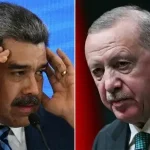With its plenary beginning on Monday (today), Pakistan may remain in the grey list of the Financial Action Task Force (FATF) though the authorities assert that the country qualifies to be moved out on merit.
Background discussions with key officials and foreign diplomats suggest that the jury is divided — with the authorities claiming sufficient progress to be confident of a positive outcome but some diplomats suggesting that even in the best case scenario Pakistan would remain in the increased monitoring list (grey list) until June.
A final decision would be announced by the FATF president on the conclusion of the four-day virtual plenary on Feb 25.
Ahead of the plenary, the FATF updated the overall performance of all countries. Based on this update, Pakistan has been shown improving compliance on two out of 40 recommendations of the FATF on effectiveness of anti-money laundering and combating financing terror (AML/CFT) systems. It finds Pakistan’s progress non-compliant on four counts, partially compliant on 25 counts and largely compliant on nine recommendations. Pakistan’s evaluation at the plenary would be based on 27-point action plan and not on these 40 recommendations.
Decision to be announced on 25th
Diplomats said they had not seen this time the kind of aggressive diplomatic effort Islamabad had been making in the past, particularly before the October 2020 plenary review. They said the plenary could discuss all options, including blacklisting Pakistan, keeping it in the grey list or removing it from the grey list.
There are, however, no chances that Pakistan could be put in the blacklist because it has at least three members of the FATF — China, Turkey and Malaysia — who can sustain all pressures against any downgrade. This is not only based on friendly bilateral relations but performance as well. “From our perspective, we have completed all action points and complied with what the country was required to do, but sometimes some influential members can raise objections on a point that one can think is not justified,” said an official.
The plenary discussions would take place on the analytical report of the FATF’s assessors on the basis of status compliance report of Pakistan. The FATF’s assessor analysis is purely of technical nature of checklists. Adversaries can challenge the positive findings and come up with negative and critical opinions about the assessors’ report. Likewise, friendly allies can question negative opinions. In both cases it leads to further discussion and conclusions are normally based on consensus.
Even the assessments may not lead to a final decision and are normally linked to an onsite visit by the FATF or its regional associates for physical verification that provides a couple of weeks to the authorities to address some minor deficiencies. If the FATF assessment finds Pakistan report to be fully compliant, even then this would be followed by an onsite visit in a couple of months and the country would formally move out of the grey list in June.
Given well known anti-Pakistan stance from arch rival India, latest diplomatic row with France and the US’s open criticism of court decision on Daniel Pearl case, the debate at the FATF plenary could turn negative.
Pakistan fully complied with 21 out of 27-point action plan last year, leading the FATF to soften its stance from previously aggressive threats and yet it kept it in the grey list in October last year. Following robust progress on anti-money laundering and terror financing laws, rules, regulations and updating inter-agency and inter-provincial cooperation, the FATF narrative shifted towards Islamabad to “demonstrate” seriousness on ground through results and prosecutions.
In October last year, the FATF had announced that Pakistan had made progress across all action plan items and “largely addressed 21 of the 27 action items”. As all action plan deadlines stood expired, the FATF had said it strongly urged Pakistan to swiftly complete its full action plan by February 2021 appreciating that it took “note of the significant progress made on a number of action plan items”.
It had asked Pakistan to continue to work on implementing its action plan to address its strategic deficiencies by “demonstrating” that law enforcement agencies are identifying and investigating the widest range of terror financing (TF) activity and that TF investigations and prosecutions target designated persons and entities, and those acting on behalf or at the direction of the designated persons or entities.
Secondly, it was required to “demonstrate” that TF prosecutions result in effective, proportionate and dissuasive sanctions and thirdly to “demonstrate” effective implementation of targeted financial sanctions against all 1,267 and 1,373 designated terrorists and those acting for or on their behalf, preventing the raising and moving of funds, including in relation to non-profit organisations (NPOs), identifying and freezing movable and immovable assets and prohibiting access to funds and financial services.
Fourth and finally, it had asked Islamabad to “demonstrate” enforcement against terror financing sanctions (TFS) violations, including in relation to NPOs, of administrative and criminal penalties and provincial and federal authorities cooperating on enforcement cases.
Foreign Office spokesman had said last week that Pakistan had made substantive progress on the remaining six items of the FATF action plan and was duly acknowledged by the wider FATF membership.
Pakistan has been on the FATF’s grey list for deficiencies in its counter-terror financing and anti-money laundering regimes since June 2018. Until the last assessment, Pakistan was found deficient in acting against the organisations allegedly linked to the terror groups listed by the UN Security Council, prosecuting and convicting banned individuals and tackling smuggling of narcotics and precious stones. Recently, the authorities had taken further steps including the prosecution of Lashkar-e-Taiba chief Hafiz Saeed and his associates in terror financing cases.
FATF President Dr Marcus Pleyer had noted in October that Pakistan had never been in the blacklist but in the grey list and based on its completion on 21 out of 27 items as largely complaint status, the country could be viewed “safer”. He had, however, made it clear that six outstanding items were “very serious and risks are not over until the government of Pakistan repairs all six outstanding items”.








